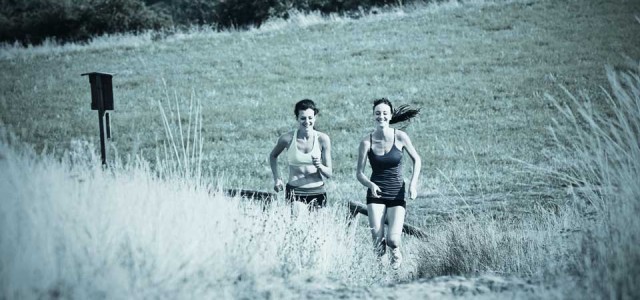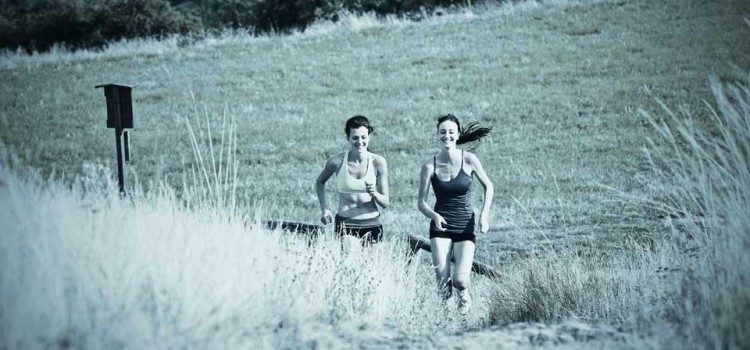

Trail Running for Half Marathoners
Half Marathon Training March 7, 2014 admin 0

Over the past decade, half marathons have become the most popular distance for running races in the United States. As more and more runners take to the roads to train for a half marathon, other runners are choosing to turn to more rugged terrain. According to the Outdoor Foundation, approximately 4.8 million Americans participated in trail running in 2009, with 13% of those being first time trail runners. With the many benefits trail running provides, it is no surprise some runners are taking to the trails to augment their road running when training for their next half marathon.
If you don’t already know of a good off-road place to run, there are several websites that recommend good trails. Some websites that offer suggestions are TrailLink and the American Trail Running Association (ATRA). ATRA also has a calendar of trail races, including many trail half marathons, and links to the race websites to register.
Benefits of Trail Running
Mental Focus: Runners are gravitating towards the trails during training because trail running provides a respite from the trouble of city running such as, pollution, traffic, and hard road surfaces. Escaping into the woods or fields allows for an outdoor experience away from the stresses of the city. Especially on long runs building up to the 13.1 mile race, runners are finding this connection to nature inspiring and helpful in maintaining focus.
Injury Prevention: Trail running is good for the body as it tends to create less impact on the body than traditional road running. This is especially important when training for a half marathon as the higher weekly mileage creates greater risks for injury. Trail surfaces are softer than the asphalt and concrete found in the city. These softer surfaces absorb some of the impact on your body as your foot strikes the ground, helping to prevent some common half marathon injuries. Soft surfaces also help to build strength in the leg muscles, which will provide more support when running and reduce the risk of injury.
Faster Times: Running on uneven surfaces requires a different stride than when running on roads. On an uneven surface, runners will take shorter and quicker strides and strike the ground more with their forefoot than their heel. All of these factors result in using less energy and allow for quicker acceleration. Carrying this trail running stride to road running will provide the same benefits. Additionally, running up hills on trails will increase strength and speed. Running uphill involves all the muscles usually used in running and the increased resistance from going uphill builds more strength.
Trail Training Tips
Starting to run off-road takes time and patience. With the uneven surface, hills, and obstacles, trail runs are usually completed at a much slower pace than road runs. When starting out, it is important to slow your pace and find a unique trail rhythm. Here are a few tips to help you perfect and enjoy your trail runs.
Running position: When running uphill on a trail it is tempting to look down at your feet. Resist the urge to do this and instead try to look up and several yards ahead of you to prevent your torso from bending. Running in an upright position allows for optimal lung capacity to get you up the hill. Also, use your arms to gain more power when running uphill and push your elbows out to a slightly wider position on technical portions of the trail to maintain better balance.
Develop Strength: Running on uneven terrain and avoiding obstacles requires increased strength in your leg muscles, ankles, and feet. It is important to include exercises that build strength and balance in your training. Some recommended strength exercises include weighted squats and lunges. Recommended balance exercises include using a balance board or standing on one foot for 30 seconds to a minute.
Stay Focused: With the uneven surfaces and obstacles, it is important to always be looking a few steps ahead of you. Make sure to plan your moves around rocks, dips, and trees before you reach them.
Stay Safe and Courteous: Run with a buddy or make sure someone knows where you’re going and when you plan to return. Take a lightweight jacket and extra water in case you are out longer than expected. Also be a courteous trail runner by yielding to downhill runners when running uphill and notifying others on the trail if you plan to pass them.
Appropriate Attire: Trail running shoes provide more support for ankles than traditional road running shoes, making ankle rolling less likely. Trail shoes also have more tread than traditional running shoes for better traction. Some trail shoes are also designed specifically for wet conditions and are waterproof. Also, depending on your trail conditions, consider taking sunglasses, gloves for potential falls, sunscreen, and bug repellant.
Have Fun: Trail running is an excellent way to be out in nature and have a change from your normal running routine. Don’t be afraid to get a little dirty and have fun when training for your next half marathon!

No comments so far.
Be first to leave comment below.